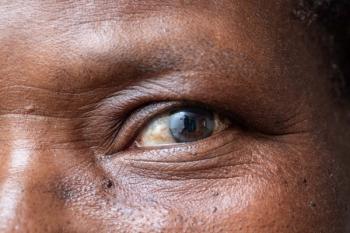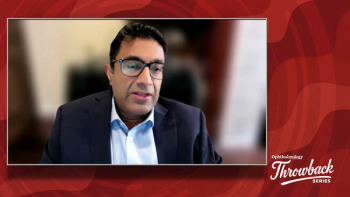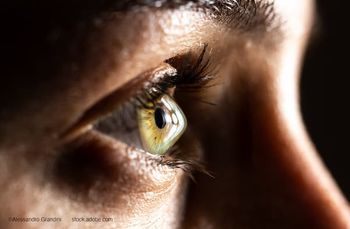
Toric options offer chance to expand patient's sweet spot
Refractive cataract surgery with premium IOL implants provides a unique opportunity for patients to achieve life-changing vision. However, not all lens platforms, including toric lens platforms, are created equal.
This article was reviewed by David A. Goldman, MD.
Beyond relying on training, surgical skills, and experience, surgeons must have ultimate confidence in the technology they use in practice and the vision-correction strategy they recommend to patients.
To incorporate
Related: The future: Development of true accommodative IOLsPick your platform theory
The eye’s spherical aberration (SA) is a combination of the positive SA of the cornea and the negative SA of the crystalline lens. In younger eyes, the positive SA of the cornea is coupled and balanced by the negative SA of the lens. With normal aging, this balanced coupling is disrupted causing decreased optical performance.1
Over time, theories have shifted along with surgeons’ preferences with regard to lens sphericity and its relationship to visual outcomes. Traditional spherical IOLs were designed with positive SA, which increases the positive SA in the eye postcataract surgery.
In the early 2000s, a new generation of lens was developed with asphericity, which more closely mirrors the natural crystalline lens.
Today’s aspheric IOL models offer different degrees of SA from negative (Tecnis IOL, Johnson & Johnson Vision), low-negative (AcrySof IOL, Alcon) to zero (enVista IOL, Bausch + Lomb).
Related: Precise alignment helps surgeons focus on best toric IOL post-op results Aspheric designs
Companies have designed aspheric IOLs with an anterior prolate surface (Johnson & Johnson Vision), a posterior prolate surface (Alcon), or with both anterior and posterior prolate surfaces (Bausch + Lomb), and these models compensate for corneal SA to varying degrees.
The Tecnis platform (Johnson & Johnson Vision) and AcrySof Restor (Alcon) aim to correct positive SA from the cornea. The enVista IOL (Bausch + Lomb) has zero SA and thus preserves the cornea’s natural sphericity profile. I favor this zero-sphericity approach because it provides my patients with an increased tolerance to defocus.
When the cornea’s SA is completely neutralized, the patient will have good contrast sensitivity, but at the same time, will notice a trade off in terms of the limited range of clear uncorrected vision.
For many patients, enVista functions with an excellent range-a big “sweet spot” to hit the intended refractive target. Patients with previous hyperopic LASIK will have eyes already presenting with negative spherical aberration, implanting a zero sphericity
There is no concern with angle kappa, as the implant’s asphericity makes it more forgiving in its use. In patients with high angle kappa or lens decentration, a negative spherical aberration lens may produce suboptimal visual outcomes.
Related: New IOL design trends avoid negative dysphotopsiasDysphotopsias
The enVista platform is associated with very low incidence of dysphotopsia.2
As Masket and Fram have discussed, the index of refraction and the surface reflectivity of lenses can be associated with positive dysphotopsia, meaning certain IOLs will show less of a tendency. Silicone and copolymer lenses tend to have a much lower incidence of positive dysphotopsia than acrylic lenses, Masket has said.3,4
In my experience, I have heard more glare and halo complaints from patients receiving implants other than enVista. There are reports of explanted lenses in the literature,3 and I have performed lens exchange due to the issue for a few patients.
Related: Dealing with positive and negative dysphotopsiasWhat else matters?
I like to know that an IOL’s material is glisteningfree, with a very clear optic that will stay that way many years out. Even if the acuity is fine, an
The material is difficult to scratch during loading, inserting, and manipulation. There is nothing more frustrating than performing a perfect cataract case and finding that the lens was inadvertently scratched during its placement in the cartridge.
Of course, with any type of toric platform, even a small amount of rotation is maybe damaging, dramatically effecting results (i.e., a 3% loss of correction effect for every 1 degree off).8
It is critical to patients’ outcomes to know that my toric choice is going to be rigid and stable. The enVista toric MX60T demonstrated excellent rotational stability,9 with 94.4% of subjects with 5° or less IOL rotation from close of case to 6 months post-op (data on file with Bausch + Lomb).
Related: Surgeon finds new monofocal IOL lens lands in a visual 'sweet spot'Tips/tricks
After checking for proper alignment, I ensure complete removal of viscoelastic, before closing the case. To help educate my patients with astigmatism, I use topographic data from the corneal analyzer (OPD-Scan III; Nidek) and show them what their vision will be like with and without an astigmatism correction. This effort impresses upon them the visual benefits of the toric technology.
Conclusion
Refractive cataract surgery with premium IOL implants provides a unique opportunity for patients to achieve life-changing vision. However, not all lens platforms, including toric lens platforms, are created equal. Choose a vision correction solution and strategy that considers the science and addresses common complaints before they arise, and you’ll be dealing with compliments instead.
Of course, whatever lens you choose, it’s important to familiarize yourself with the instructions for use for full product information, including indications and safety.
Related: More stable surgery may help better predict effective IOL position
David A. Goldman, MDE: [email protected]
Dr. Goldman is a stockholder for Bausch Health Companies, Inc.
References:
1. Artal, P, Berrio, E, Guirao, A, and Piers, P Contribution of the cornea and internal surfaces to the change of ocular aberrations with age. J Opt Soc Am A Opt Image Sci Vis. 2002;19:137–143
2. Packer M, Mohan Rajan M, Ligabue E, Heiner P. Clinical properties of a novel, glistening-free, single-piece, hydrophobic acrylic IOL. Clin Ophthalmol. 2014; 8: 421–427. doi: 10.2147/OPTH.S57114.
3. Masket S, Fram N. Pseudophakic negative dysphotopsia: Surgical management and new theory of etiology. J Cataract Refract Surg 2011;37:7:1199-1207.
4. Masket S, Fram N, et al. Surgical management of negative dysphotopsia. J Cataract Refractive Surg. 2018;44(1):6-16.
5. Mooren M, Franssen L, Piers P. Effects of glistenings in intraocular lenses. Biomed Opt Express. 2013;4(8): 1294–1304. doi: 10.1364/BOE.4.001294
6. Matsushima H, Nagata M, Katsuki Y, et al. Decreased visual acuity resulting from glistening and sub-surface nanoglistening formation in intraocular lenses: A retrospective analysis of 5 cases. Saudi J Ophthalmol. 2015;29(4):259- 263. doi: 10.1016/j.sjopt.2015.07.001.
7. enVista® Toric DFU
8. Potvin R, Kramer B Hardten D, Berdahl J. Toric intraocular lens orientation and residual refractive astigmatism: an analysis. Clin Ophthalmol. 2016;10:1829–1836. doi: 10.2147/OPTH.S114118.
9. Packer M, Williams JI, Feinerman G, Hope RS. Prospective multicenter clinical trial to evaluate the safety and effectiveness of a new glistening-free one-piece acrylic toric intraocular lens. Clin Ophthalmol. 2018; 12:1031– 1039. doi: 10.2147/OPTH.S167726
Newsletter
Don’t miss out—get Ophthalmology Times updates on the latest clinical advancements and expert interviews, straight to your inbox.



















































.png)


